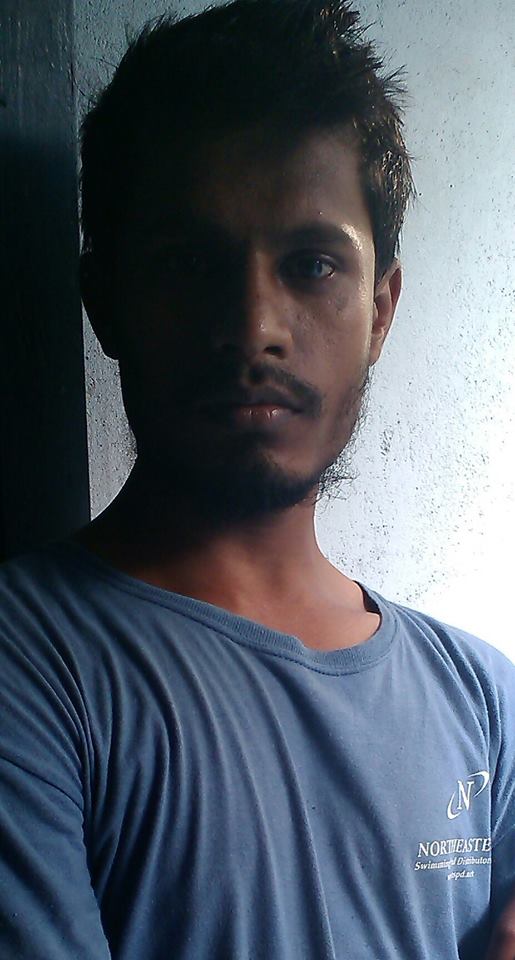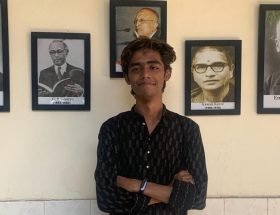Yogesh Maitreya
 After watching Fandry, I remembered my grandfather who died a few years ago. The movie suddenly brought back his memories alive, in front of my eyes. An ‘untouchable’, his name was Gariba (poor). He used to break stones, all his life, to earn a few rupees with which he raised a large family. At the end, I had seen him dying in deprivation and poverty. After a long time I succeeded in acknowledging the reality that he and many others like him were victims of the caste system.
After watching Fandry, I remembered my grandfather who died a few years ago. The movie suddenly brought back his memories alive, in front of my eyes. An ‘untouchable’, his name was Gariba (poor). He used to break stones, all his life, to earn a few rupees with which he raised a large family. At the end, I had seen him dying in deprivation and poverty. After a long time I succeeded in acknowledging the reality that he and many others like him were victims of the caste system.
When I learnt to question about matters of life, social realities and ways in which untouchability fettered the freedom of his life, he was not there any more to answer any questions. What he had gone through as an untouchable and his struggles – many of us might, in this exploitative neo-liberal age, now be under the delusion that they couldn’t have happened. The important source of my own roots, my ancestors’ history and roots of forefathers have remained unexhumed. But Fandry illustrates many of the struggles which I have seen my own family and those around me go through, though in different settings.
Fandry, meaning ‘pig’ in the dialect spoken by Kaikadi (untouchable) community, is the central symbol of stigma of untouchability in Fandry. The film is written and directed by Nagraj Manjule, who himself is a Dalit hailing from the interiors of Maharashtra. Ambedkar had once said that these small hamlets (villages) are nothing but dens of the caste system. For those who are the subject and object of subjugation of untouchability in many ways, the symbolic end of the movie where the protagonist of the movie Jabya (Jambuwant), an ‘untouchable’, forcefully pelts the rebellious stone towards the casteist goons of the village who teased and insulted his sister with casteist abuses, is the most significant scene of the movie. Those who have undergone such trauma would recognize the symbolic and deep messages it conveys.
Jabya is caught between his aspirations to study and his poor socio-economic background – his dreams too are filled with the horrors of untouchability. Also, the social stigma of being an untouchable haunts him in the way he loves his classmate Shalu (an upper caste girl). Love is the side theme of the movie. Love, friendship, hatred, jealousy, struggle for survival with dignity – all enmeshed in the context of untouchability; and that’s what makes this movie different from any Indian movie made in the last many decades. It touches the subject of untouchability directly, depicting unbiased reality.

The movie attempts successfully to create new horizons for Dalit aesthetics in the cinematic form. It unleashes a subject like untouchability with fine cinematography and well scored background music. The core subject of the movie, to my knowledge, has never been portrayed so beautifully in any Indian movie. Manjule’s treatment of his subject as a director should be recognized as a remarkable endeavour in world cinema. It is of world class stature by any standards of judgement.
The key aesthetic element of the movie lies in the central character, in Jabya. Jabya loves his classmate Shalu who belongs to an upper caste, but despite his adolescent exploration of love, he is equally aware about the responsibility towards family and the need for money for his sister’s marriage. So Jabya works on weekends, sells ice-lollies in distant places in the city, far away from his village, to avoid the mockery of his classmates while working there. Being from an untouchable caste, Jabya, on an occasion is asked to pull away a pig from a gutter and dry it. Jabya refuses to do so with sheer rebellion in his silent eyes.
Here Jabya seems to add a new dimension to the heroic image in the cinematic world. The film depicts his hate for these degrading menial jobs while at the same time conveying his aspirations to study, his desire for freedom. His “mi nahi karnar (I won’t do it)” is the symbolic message of the rebel from all the oppressed people who have been forced to do stigmatized labour imposed on them by the system of caste.

Yes, Jabya tells us how to live now. That’s how history is being made and the shackles of slavery are being broken down. That is how people from the hamlets, like my grandfather, fought against the casteist forces, acting as rebels and created new life for themselves. That’s how my father toiled hard to make us study. Yes, that’s how we learn to give a tight slap to the established system of caste.
Yes, we got our new hero in JABYA.
[Please watch the official trailer of the movie Fandry here]
~~~
Yogesh says:
My name is Yogesh Maitreya. I am from Nagpur. I am doing my M.A in Criminology and Justice (2013-15) from TISS (Tata Institute of Social Sciences, Mumbai).










